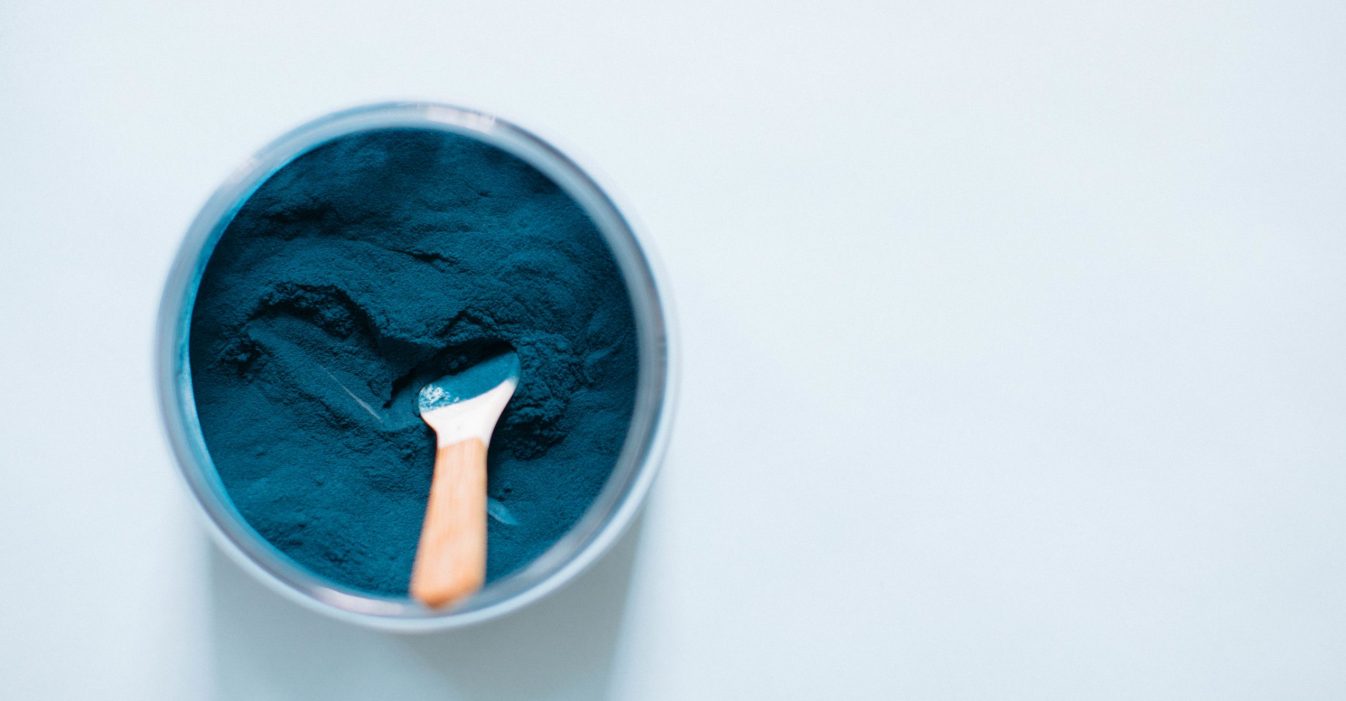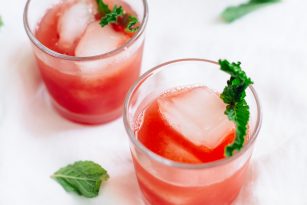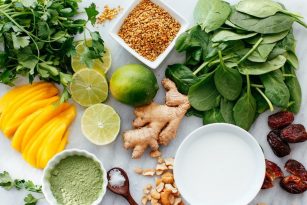Algae are seaweed and other chlorophyll-containing plants that lack stems, roots, and leaves — and may provide some health benefits.
When you hear the word algae, you might think of that green substance that settles at the bottom of a pool or floats on the top of a pond. You are right, that is algae, but there’s also the edible kind of algae, which is rich in micronutrients important to our health.
Because it’s so important to get necessary nutrients from nature-grown foods — and sometimes what those foods are can be confusing — let’s break down everything you need to know about this plant from what algae is, the benefits of consuming it, plus where to get it and how to use it. First off, what is algae?
What is Algae?
Microalgae, which we’re talking about today, are tiny photosynthetic plants, which contain chlorophyll—the substance that gives them their intense green color. They take the energy from the sun and convert it to sugars and proteins essential to the body (and the plant themselves), and you can find them in both freshwater and saltwater environments.
While some algae can be toxic, we’re focusing on the edible kind that you can add to foods or mix into salads. A few common forms you might have heard of before including spirulina and chlorella, both of which come in both a powder and a pill form. Another popular edible seaweed is nori, which you’ll see in Asian cuisines, particularly the seaweed wrapped around sushi rolls.
What Are the Health Benefits of Algae?
Just one tablespoon of spirulina or chlorella (blue-green algae) provides four grams of protein, along with a healthy dose of calcium, iron, magnesium, and potassium. You’ll also get B vitamins and vitamin A (beta-carotene), along with essential fats. According to research, it’s also difficult to reach a toxic level of spirulina, making it a good choice to add to foods or take as a supplement on its own if in pill form (1). All of these vitamins and minerals help energize your body and help it run more efficiently, from protecting your immune system to fighting off diseases.
Research also shows that seaweed is high in powerful antioxidants that can provide some anti-cancer benefits (2). Furthermore, science suggests the high fiber content in a dose of seaweed could help control weight, and more specifically help fight obesity by decreasing fat digestion (3).
To round it out, microalgae contains carotenoids (a type of antioxidant) called zeaxanthin and lutein, both of which support eye health and brain health, along with disease prevention.
Nutrition In Blue-Green Algae
Take spirulina for example, in just 1 tablespoon of spirulina powder contains
- 4 grams of protein
- 21% of the RDA of Copper
- 15% of the RDA of vitamin B2
- 11% of the RDA of vitamin B1
- 11% of the RDA of iron
- 4% of the RDA of vitamin B3
- Good amounts of magnesium, potassium, manganese, zinc, selenium, choline, beta-carotene, vitamin K, and more antioxidants and small amounts of fatty acids
When Purchasing Blue-Green Algae
Keep in mind to purchase only organic varieties that are processed at very low heat to retain the maximum nutrition and to ensure the best growing practices. Since blue-green algae are grown in and come from water, it’s surrounded by free toxins floating in the water and is more susceptible to contamination of heavy metals, industrial or agricultural runoff, etc. found in the waters.
These toxins, called microcystins, can mostly be avoided by purchasing from a trusted brand who grows it organically. Notice I say mostly – there are some that show some less than beneficial side effects of blue-green algae (4) (5).
How to Incorporate Algae into Your Diet
My favorite way to add algae to my diet is in smoothies. You can easily toss a tablespoon into your favorite recipe, as it doesn’t influence the flavor too much, though it will add a slight leafy green taste. Another way to get algae in your diet is by adding it to something like energy balls or protein bars. Here are a few of my top recipes that incorporate algae:
Blue-Green Spirulina Milk
Seabreeze Spirulina Smoothie
Spirulina Energy Globes
Bottom Line
Blue-green algae surprisingly taste great when mixed in with smoothies and some dessert recipes, can boost the minerals and protein very simply, yet need to be purchased from a great supplier and brand to make sure their farming practices are providing the best quality.
Above all, it’s always a good idea to talk to your dietitian or doctor before trying anything new like this, especially if you’re looking to add this ingredient into your diet to help reduce symptoms of a certain health condition and just to make sure it’s right for you!
Let’s Chat!
Do you have a favorite recipe featuring algae? How do you use it in your diet? Share below or with #nutritionstripped on social.
References:
-
Gutiérrez-Salmeán G, Fabila-Castillo L, Chamorro-Cevallos G. (2015, July.) Nutritional and Toxicological Aspects of Spirulina (Arthrospira).
-
Koníčková R, Vaňková K, Vaníková J, Váňová K, Muchová L, Subhanová I, Zadinová M, Zelenka J, Dvořák A, Kolář M, Strnad H, Rimpelová S, Ruml T, J Wong R, Vítek L. (2014, March/April.) Anti-cancer effects of blue-green alga Spirulina platensis, a natural source of bilirubin-like tetrapyrrolic compounds.
- Newcastle University. (2010, March.) Seaweed to tackle rising tide of obesity.
-
Y. Jiang, P. Xie, J. Chen, G. Liang. Food Addit Contam Part A Chem Anal Control Expo Risk Assess. 2008 Jul. Detection of the hepatotoxic microcystins in 36 kinds of cyanobacteria Spirulina food products in China.
-
Sandra Rellán, Joana Osswald, Martin Saker, Ana Gago-Martinez, Vitor Vasconcelos. Food Chem Toxicol. 2009 Sep. First detection of anatoxin-a in human and animal dietary supplements containing cyanobacteria.







